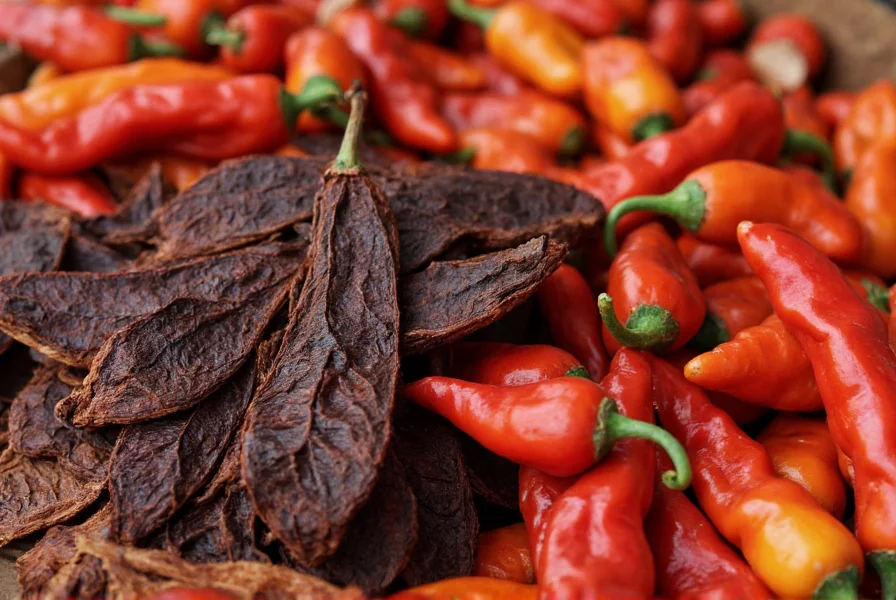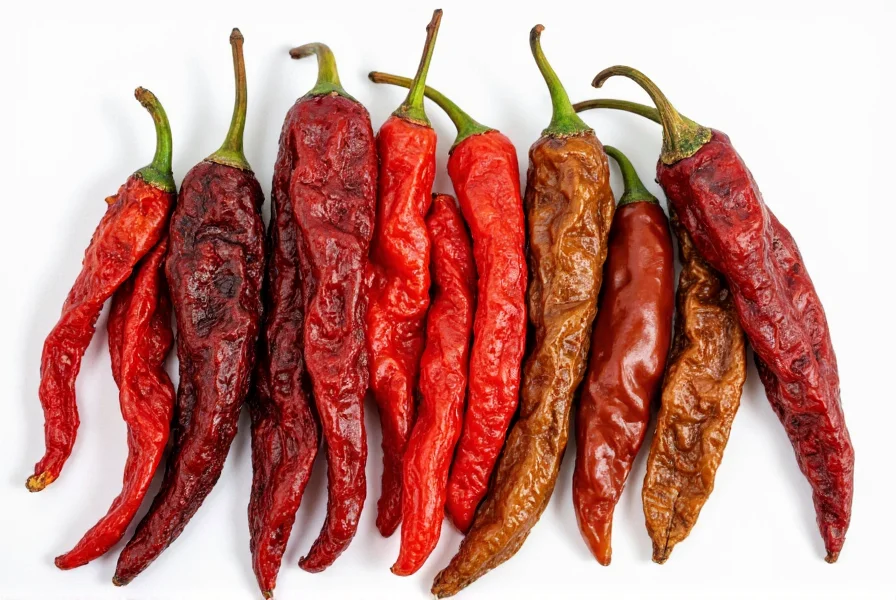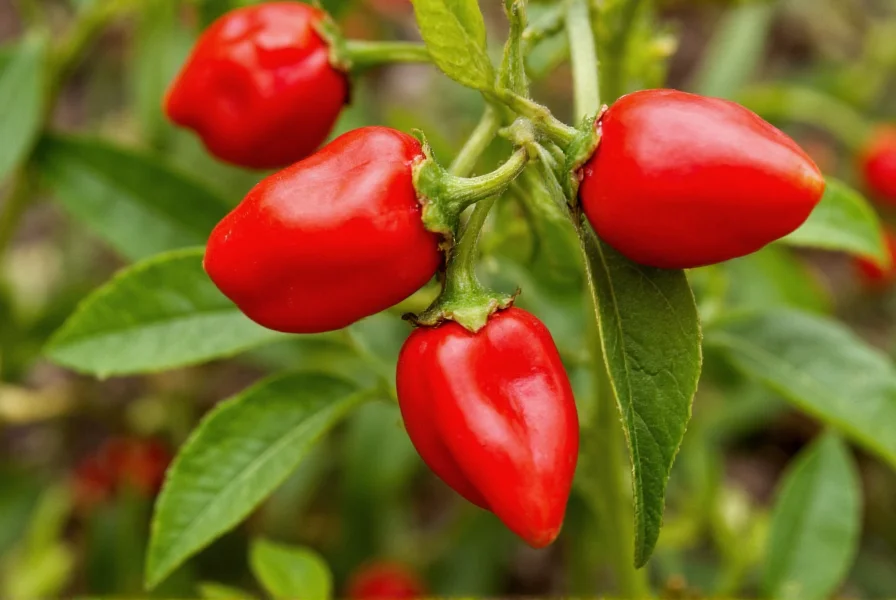Understanding the true nature of pasilla peppers prevents common culinary mistakes. Many grocery stores incorrectly label fresh poblano peppers as “pasilla,” causing confusion for home cooks seeking authentic Mexican flavors. The genuine pasilla is always the dried form of the chihuacle pepper, which ripens from green to dark purple-brown before drying.
Identifying Genuine Pasilla Peppers
Proper identification ensures you're using the right ingredient for authentic recipes. True pasilla peppers have distinctive characteristics that set them apart from common substitutes:
| Characteristic | True Pasilla Pepper | Common Misidentification (Poblano) |
|---|---|---|
| Botanical Name | Chilaca (fresh), Pasilla (dried) | Poblano (fresh), Ancho (dried) |
| Color | Dark brown to black when dried | Bright green when fresh, reddish-brown when dried |
| Shape | Long (6-8 inches), slender, wrinkled | Broad, heart-shaped, 3-4 inches wide |
| Heat Level | 1,000-2,500 SHU (mild-medium) | 1,000-2,000 SHU (mild) |

Flavor Profile and Culinary Applications
The pasilla pepper's complex flavor profile makes it indispensable in traditional Mexican cuisine. When properly rehydrated, it delivers earthy, smoky notes with subtle hints of dried fruit, licorice, and cocoa. This distinctive taste forms the foundation of many regional dishes across Mexico, particularly in Oaxacan and Pueblan cooking traditions.
Chefs prize pasilla peppers for their ability to add depth without overwhelming heat. Unlike hotter varieties, pasillas provide nuanced flavor that enhances rather than dominates a dish. The drying process concentrates natural sugars while developing complex compounds that fresh peppers lack.
Traditional Uses in Mexican Cuisine
Pasilla peppers shine in specific culinary applications where their unique flavor profile is essential:
- Mole sauces: Particularly mole negro from Oaxaca, where pasillas combine with mulato and ancho peppers to create the sauce's characteristic depth
- Salsas: Both cooked and raw salsas benefit from pasilla's complexity, especially salsa pasilla which features roasted tomatoes and garlic
- Stews and braises: Added to pozole, menudo, and other slow-cooked dishes for background flavor
- Marinades: Blended with spices and citrus for meats, particularly pork and chicken
When working with dried pasillas, proper preparation maximizes flavor. Toast the peppers lightly in a dry skillet for 15-20 seconds per side until fragrant but not burnt, then soak in hot water for 15-20 minutes until pliable. This rehydration process unlocks their full flavor potential while removing any dust or impurities.
Pasilla Pepper Substitutes
When genuine pasilla peppers aren't available, understanding appropriate substitutes prevents recipe failure. Not all mild chilies can adequately replace pasilla's distinctive flavor profile:
| Substitute | Best For | Adjustment Needed |
|---|---|---|
| Ancho + Mulato blend (1:1) | Mole sauces, complex dishes | Provides similar depth; use 25% less by volume |
| Dried New Mexico chilies | Everyday cooking, salsas | Add pinch of cocoa powder for earthiness |
| Guajillo + Chipotle blend | When smokiness is desired | Use 50% less chipotle to avoid excessive heat |

Nutritional Benefits of Pasilla Peppers
Beyond their culinary value, pasilla peppers offer notable nutritional benefits. Like other chili peppers, they contain capsaicinoids that provide health advantages while contributing minimal calories. A single ounce (28g) of dried pasilla pepper provides:
- Approximately 85 calories
- Rich in vitamin A (130% of daily value)
- Excellent source of vitamin B6 and iron
- Contains capsaicin, which may support metabolism
- Provides dietary fiber (25% of daily value)
Research suggests regular consumption of chili peppers like pasilla may contribute to cardiovascular health and provide anti-inflammatory benefits. The drying process concentrates certain nutrients while preserving the pepper's beneficial compounds.
Finding and Storing Authentic Pasilla Peppers
Locating genuine pasilla peppers requires attention to labeling and sourcing. Specialty Mexican markets typically offer the most authentic products, while mainstream grocery stores often mislabel poblanos as pasillas.
When selecting pasilla peppers, look for:
- Deep brown to black color (not reddish-brown)
- Flexible texture (brittle peppers indicate age)
- Rich, smoky aroma without mustiness
- Origin labels specifying Mexican production
Proper storage maintains quality for up to one year. Keep dried pasillas in an airtight container away from light and moisture. For extended storage, freeze peppers in vacuum-sealed bags to preserve flavor compounds.
Common Misconceptions About Pasilla Peppers
Several persistent myths cause confusion among home cooks:
- Misconception: Fresh green poblanos are called pasillas when ripe
Reality: Poblanos become anchos when dried; pasillas come from chihuacle peppers - Misconception: All dark dried chilies are pasillas
Reality: Mulatos and other varieties also appear dark when dried - Misconception: Pasillas are extremely hot
Reality: They rank mild to medium on the Scoville scale (1,000-2,500 units)
Understanding these distinctions ensures authentic results when preparing traditional Mexican dishes that specifically call for pasilla peppers.
Frequently Asked Questions
What's the difference between pasilla and poblano peppers?
True pasilla peppers are dried chihuacle peppers, while poblanos are a different fresh pepper variety that become anchos when dried. Grocery stores often mislabel fresh poblanos as “pasilla,” causing confusion. Pasillas are long and slender when dried, while poblanos are broad and heart-shaped when fresh.
How hot are pasilla peppers compared to other chilies?
Pasilla peppers rate between 1,000-2,500 Scoville Heat Units (SHU), placing them in the mild to medium range. They're hotter than bell peppers (0 SHU) but milder than jalapeños (2,500-8,000 SHU) and significantly milder than habaneros (100,000-350,000 SHU). Their heat is balanced by complex flavor notes rather than intense spiciness.
Can I substitute ancho peppers for pasilla peppers?
You can substitute anchos for pasillas in a pinch, but the flavor profile will differ. For better results, use a 1:1 blend of ancho and mulato peppers, which more closely approximates pasilla's complex flavor. Reduce the total amount by 25% since the substitute blend lacks pasilla's distinctive earthiness.
How should I prepare dried pasilla peppers for cooking?
First, remove stems and seeds. Lightly toast the peppers in a dry skillet for 15-20 seconds per side until fragrant. Then soak in hot water for 15-20 minutes until pliable. This rehydration process unlocks their full flavor while removing any dust. Reserve the soaking liquid for added depth in sauces and stews.
Where can I find authentic pasilla peppers?
Authentic pasilla peppers are best found at specialty Mexican markets, particularly those with Mexican ownership. Look for peppers labeled “chile pasilla” or “chilaca seco.” Online retailers specializing in authentic Mexican ingredients also offer genuine pasillas. Avoid mainstream grocery stores where poblanos are often mislabeled as pasillas.











 浙公网安备
33010002000092号
浙公网安备
33010002000092号 浙B2-20120091-4
浙B2-20120091-4